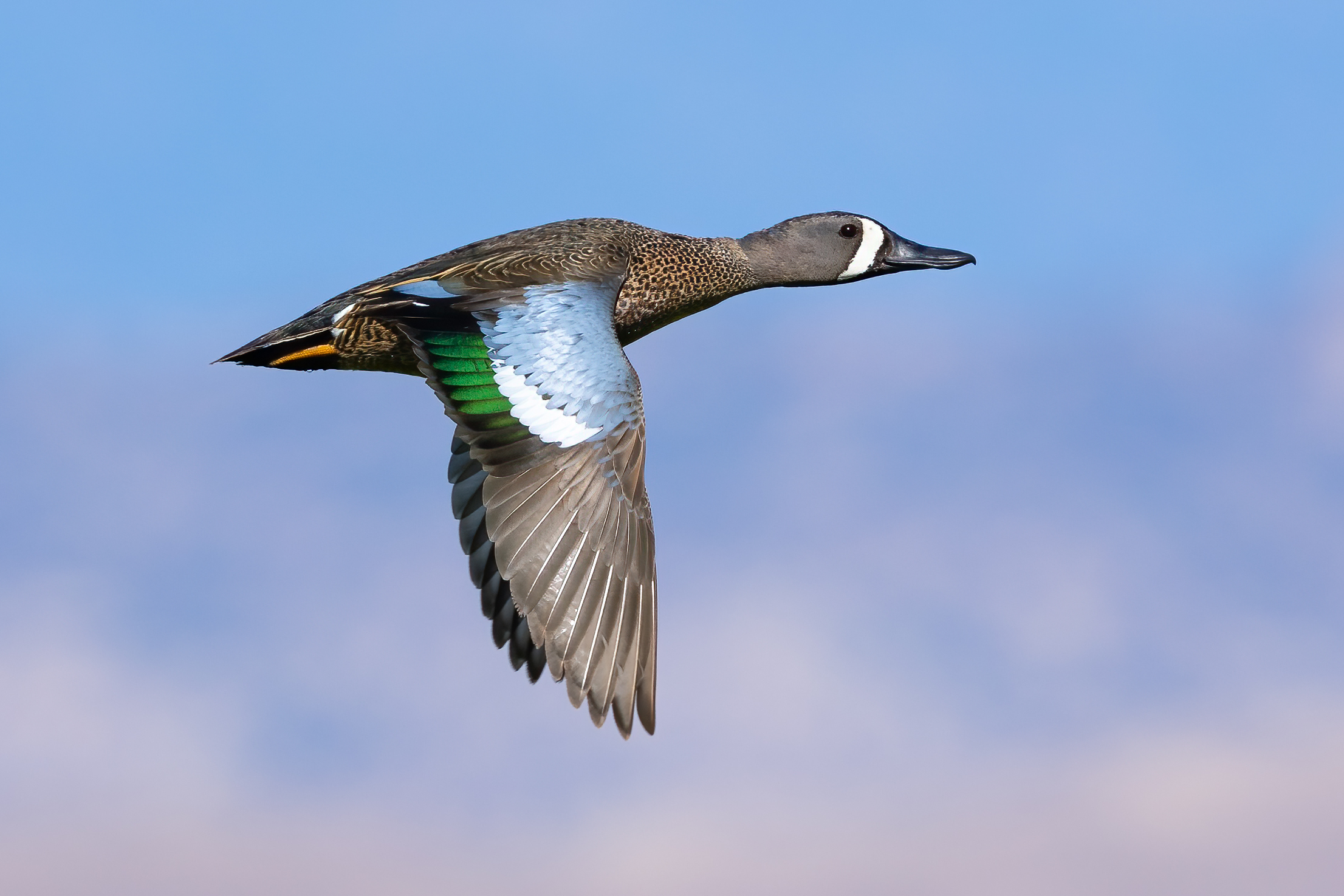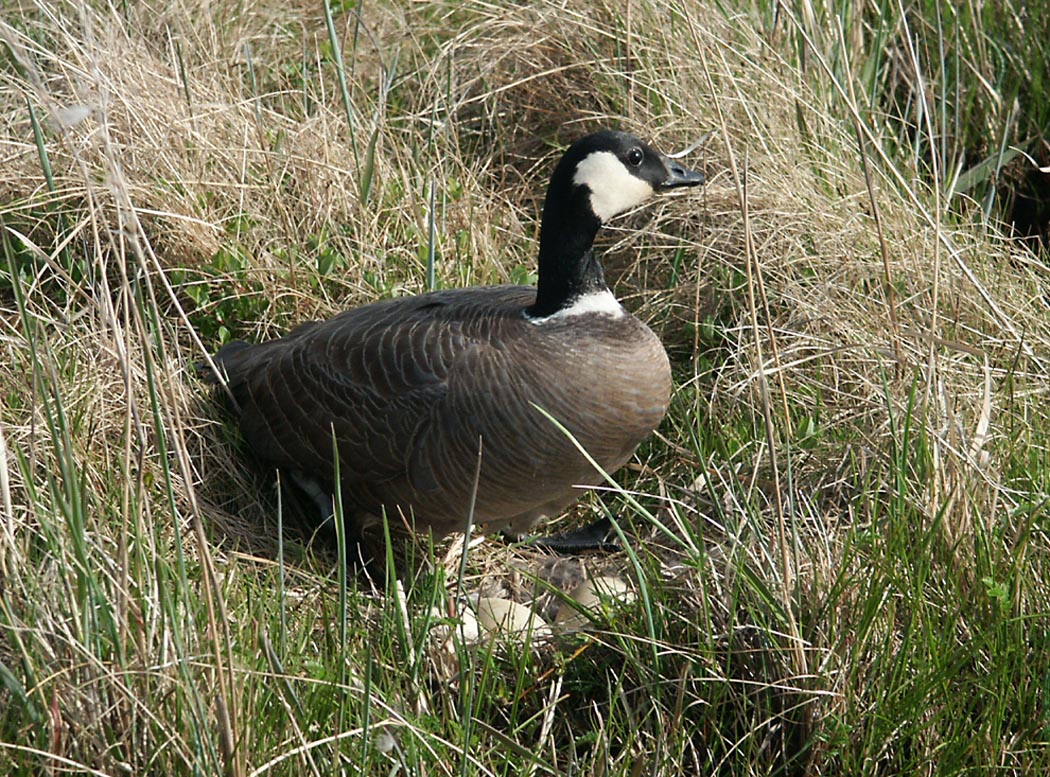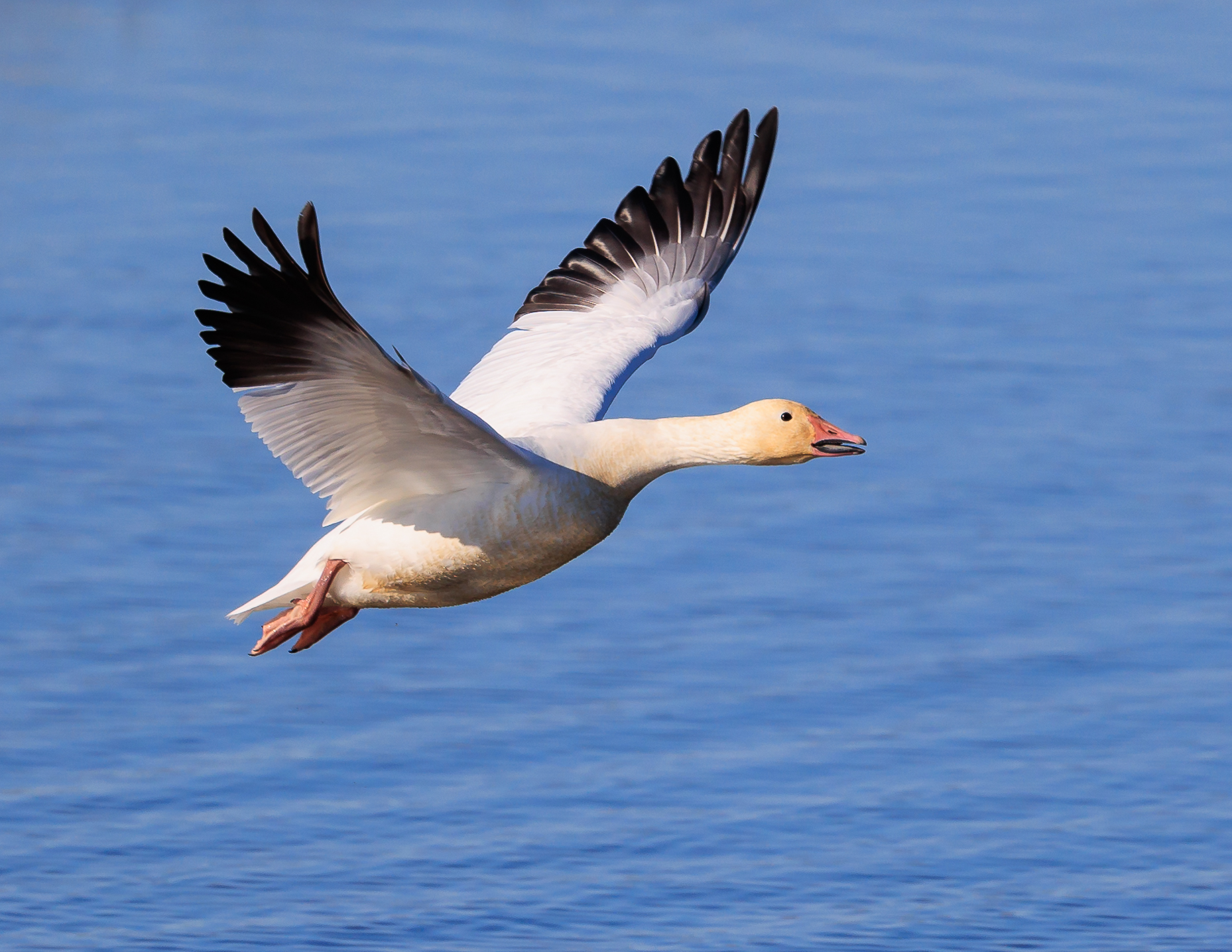|
List Of Birds Of The U.S. Minor Outlying Islands
This is a list of birds of the United States Minor Outlying Islands. This area consists of Baker Island, Howland Island, Jarvis Island, Johnston Atoll, Kingman Reef, Midway Atoll, Palmyra Atoll, and Wake Island in the Pacific Ocean and Navassa Island in the Caribbean Sea. The two areas between them have recorded 236 species. Of them, 24 have been recorded at both Navassa Island and at least one of the Pacific Ocean entities and 49 have been found only on Navassa Island. Of the 236, 123 are rare or accidental at one or both of the areas. Three species are endemic, one is extinct, two have been extirpated, and nine were introduced by humans. The Wake Island rail was a species endemic to Wake Island, but it is now extinct. The Laysan duck is endemic to the Northwest Hawaiian Islands (which includes Midway Atoll — Midway Atoll is part of the U.S. Minor Outlying Islands, not the state of Hawaii). The endemic and critically endangered Nihoa finch was extirpated from Midway Atol ... [...More Info...] [...Related Items...] OR: [Wikipedia] [Google] [Baidu] |
Starr 080607-7217 Boerhavia Repens
Starr may refer to: People and fictional characters * Starr (surname), a list of people and fictional characters * Starr (given name), a list of people and fictional characters Places United States * Starr, Ohio, an unincorporated community * Starr, South Carolina, a town * Starr County, Texas * Starr Township, Cloud County, Kansas * Starr Township, Hocking County, Ohio * Starr Historic District, Richmond, Indiana * Mount Starr, a mountain in California Antarctica * Starr Peninsula, Ellsworth Land * Starr Lake (McMurdo Station), Ross Island * Starr Nunatak, Victoria Land Elsewhere * Starr Gate, a location in Blackpool, Lancashire, England * 4150 Starr, a minor planet Buildings * Starr House (other), various houses on the United States National Register of Historic Places * Starr Mill, Middletown, Connecticut, on the National Register of Historic Places * Starr Arena, a sports facility in Hamilton, New York, United States Ships * HMS ''Starr ... [...More Info...] [...Related Items...] OR: [Wikipedia] [Google] [Baidu] |
Taxonomy (biology)
In biology, taxonomy () is the scientific study of naming, defining ( circumscribing) and classifying groups of biological organisms based on shared characteristics. Organisms are grouped into taxa (singular: taxon) and these groups are given a taxonomic rank; groups of a given rank can be aggregated to form a more inclusive group of higher rank, thus creating a taxonomic hierarchy. The principal ranks in modern use are domain, kingdom, phylum (''division'' is sometimes used in botany in place of ''phylum''), class, order, family, genus, and species. The Swedish botanist Carl Linnaeus is regarded as the founder of the current system of taxonomy, as he developed a ranked system known as Linnaean taxonomy for categorizing organisms and binomial nomenclature for naming organisms. With advances in the theory, data and analytical technology of biological systematics, the Linnaean system has transformed into a system of modern biological classification intended to reflect the evolu ... [...More Info...] [...Related Items...] OR: [Wikipedia] [Google] [Baidu] |
Gadwall
The gadwall (''Mareca strepera'') is a common and widespread dabbling duck in the family Anatidae. Taxonomy The gadwall was first described by Carl Linnaeus in his landmark 1758 10th edition of ''Systema Naturae''. DNA studies have shown that it is a sister species with the falcated duck; the two are closely related to the three species of wigeons, and all of them have been assigned to the genus ''Mareca''. There are two subspecies: * ''M. s. strepera'', the common gadwall, described by Linnaeus, is the nominate subspecies. * ''M. s. couesi'', Coues's gadwall, extinct 1874, was formerly found only on Teraina, a coral atoll in the Pacific Ocean. The specific name ''strepera'' is Late Latin for "noisy". The etymology of the word ''gadwall'' is not known, but the name has been in use since 1666. Description The gadwall is long with a wingspan. The male is slightly larger than the female, weighing on average against her . The breeding male is patterned grey, with a black re ... [...More Info...] [...Related Items...] OR: [Wikipedia] [Google] [Baidu] |
Northern Shoveler
The northern shoveler (; ''Spatula clypeata''), known simply in Britain as the shoveler, is a common and widespread duck. It breeds in northern areas of Europe and across the Palearctic and across most of North America, wintering in southern Europe, the Indian subcontinent, Southeast Asia, Central, the Caribbean, and northern South America. It is a rare vagrant to Australia. In North America, it breeds along the southern edge of Hudson Bay and west of this body of water, and as far south as the Great Lakes west to Colorado, Nevada, and Oregon. The northern shoveler is one of the species to which the ''Agreement on the Conservation of African-Eurasian Migratory Waterbirds'' (AEWA) applies. The conservation status of this bird is Least Concern. Taxonomy The northern shoveler was first formally described by the Swedish naturalist Carl Linnaeus in 1758 in the tenth edition of his ''Systema Naturae''. He introduced the binomial name ''Anas clypeata''. A molecular phylogentic study ... [...More Info...] [...Related Items...] OR: [Wikipedia] [Google] [Baidu] |
Blue-winged Teal
The blue-winged teal (''Spatula discors'') is a species of bird in the duck, goose, and swan family Anatidae. One of the smaller members of the dabbling duck group, it occurs in North America, where it breeds from southern Alaska to Nova Scotia, and south to northern Texas. It winters along the Pacific and Atlantic coasts and south into the Caribbean islands and Central America. Taxonomy The first formal description of the blue-winged teal was by the Swedish naturalist Carl Linnaeus in 1766 in the twelfth edition of his '' Systema Naturae''. He coined the binomial name ''Anas discors''. A molecular phylogentic study comparing mitochondrial DNA sequences published in 2009 found that the genus ''Anas'', as then defined, was non-monophyletic. The genus was subsequently split into four monophyletic genera with ten species including the blue-winged teal moved into the resurrected genus ''Spatula''. This genus had been originally proposed by the German zoologist Friedrich Boie ... [...More Info...] [...Related Items...] OR: [Wikipedia] [Google] [Baidu] |
Garganey
The garganey (''Spatula querquedula'') is a small dabbling duck. It breeds in much of Europe and across the Palearctic, but is strictly migratory, with the entire population moving to southern Africa, India (in particular Santragachi), Bangladesh (in the natural reservoirs of Sylhet district) and Australasia during the winter of the Northern hemisphere, where large flocks can occur. This species was first described by Carl Linnaeus in his landmark 1758 10th edition of ''Systema Naturae''. Like other small ducks such as the Eurasian teal, this species rises easily from the water with a fast twisting wader-like flight. Their breeding habitat is grassland adjacent to shallow marshes and steppe lakes. Taxonomy The first formal description of the garganey was by the Swedish naturalist Carl Linnaeus in 1758 in the tenth edition of his ''Systema Naturae''. He introduced the binomial name ''Anas querquedula''. A molecular phylogentic study comparing mitochondrial DNA sequences publis ... [...More Info...] [...Related Items...] OR: [Wikipedia] [Google] [Baidu] |
Tundra Swan
The tundra swan (''Cygnus columbianus'') is a small swan of the Holarctic. The two taxa within it are usually regarded as conspecific, but are also sometimes split into two species: Bewick's swan (''Cygnus bewickii'') of the Palaearctic and the whistling swan (''C. columbianus'') proper of the Nearctic. Birds from eastern Russia (roughly east of the Taymyr Peninsula) are sometimes separated as the subspecies ''C. c. jankowskii'', but this is not widely accepted as distinct, with most authors including them in ''C. c. bewickii''. Tundra swans are sometimes separated in the subgenus ''Olor'' together with the other Arctic swan species. Bewick's swan was named in 1830 by William Yarrell after the engraver Thomas Bewick, who specialised in illustrations of birds and animals. ''Cygnus'' is the Latin for "swan", and '' columbianus'' comes from the Columbia River, the type locality. Description ''C. columbianus'' is the smallest of the Holarctic swans, at in length, in wingspan and ... [...More Info...] [...Related Items...] OR: [Wikipedia] [Google] [Baidu] |
Cackling Goose
The cackling goose (''Branta hutchinsii'') is a species of goose found in North America. Description The black head and neck with white "chinstrap" distinguish this goose from all other geese except the larger Canada goose (''Branta canadensis'') and the similarly sized barnacle goose (''B. leucopsis''). There are up to 5 subspecies of cackling goose, of varying sizes and plumage details. The female looks virtually identical but is slightly lighter and has a different voice. Some are hard to distinguish from the Canada goose, with which the cackling goose was long assumed to form one species, the cackling goose and the smaller Canada goose subspecies being called the lesser Canada goose. The smallest Cackling geese (''B. h. minima'') are much smaller than any Canada goose, but the subspecies ''B. h. hutchinsii'', at up to , grows to the same size as some Canada geese. The distinctness of the extinct population of the Komandorski and Kuril Islands ''B. h. asiatica'' is controvers ... [...More Info...] [...Related Items...] OR: [Wikipedia] [Google] [Baidu] |
Brant (goose)
The brant or brent goose (''Branta bernicla'') is a small goose of the genus ''Branta''. There are three subspecies, all of which winter along temperate-zone sea-coasts and breed on the high-Arctic tundra. The Brent oilfield was named after the species. Description The brant is a small goose with a short, stubby bill. It measures long, across the wings and weighs . The under-tail is pure white, and the tail black and very short (the shortest of any goose). The species is divided into three subspecies: * Dark-bellied brant goose ''B. b. bernicla'' (Linnaeus, 1758) * Pale-bellied brant goose ''B. b. hrota'' ( Müller, 1776) (also known as light-bellied brent goose in Europe, and Atlantic brant in North America) * Black brant goose ''B. b. nigricans'' (Lawrence, 1846) (sometimes also known as the Pacific brant in North America) Some DNA evidence suggests that these forms are genetically distinct; while a split into three separate species has been proposed, it is not wide ... [...More Info...] [...Related Items...] OR: [Wikipedia] [Google] [Baidu] |
Greater White-fronted Goose
The greater white-fronted goose (''Anser albifrons'') is a species of goose related to the smaller lesser white-fronted goose (''A. erythropus''). It is named for the patch of white feathers bordering the base of its bill, in fact ''albifrons ''comes from the Latin ''albus'' "white" and ''frons "''forehead". In Europe it has been known as the white-fronted goose; in North America it is known as the greater white-fronted goose (or "greater whitefront"), and this name is also increasingly adopted internationally. Even more distinctive are the salt-and-pepper markings on the breast of adult birds, which is why the goose is colloquially called the "specklebelly" in North America. Description Greater white-fronted geese are in length, have a wingspan, and weigh . They have bright orange legs and mouse-coloured upper wing-coverts. They are smaller than greylag geese. As well as being larger than the lesser white-fronted goose, the greater white-fronted goose lacks the yellow eye-r ... [...More Info...] [...Related Items...] OR: [Wikipedia] [Google] [Baidu] |
Snow Goose
The snow goose (''Anser caerulescens'') is a species of goose native to North America. Both white and dark morphs exist, the latter often known as blue goose. Its name derives from the typically white plumage. The species was previously placed in the genus ''Chen'', but is now typically included in the "gray goose" genus ''Anser''. Snow geese breed north of the timberline in Greenland, Canada, Alaska, and the northeastern tip of Siberia, and spend winters in warm parts of North America from southwestern British Columbia through parts of the United States to Mexico. Snow goose populations increased dramatically in the 20th century. Taxonomy In 1750 the English naturalist George Edwards included an illustration and a description of the snow goose in the third volume of his ''A Natural History of Uncommon Birds''. He used the English name "The blue-winged goose". Edwards based his hand-coloured etching on a preserved specimen that had been brought to London from the Hudson Bay a ... [...More Info...] [...Related Items...] OR: [Wikipedia] [Google] [Baidu] |
Emperor Goose
The emperor goose (''Anser canagicus''), also known as the beach goose or the painted goose, is a waterfowl species in the family Anatidae, which contains the ducks, geese, and swans. It is blue-gray in color as an adult and grows to in length. Adults have a black chin and throat, a pink bill, yellow-orange legs, and a white head, which often turns reddish-brown in summer. In the winter, the emperor goose lives in mudflats and coasts in Alaska and occasionally Canada and the contiguous United States. In the summer, it bird migration, migrates northerly several hundred miles to arctic and sub-arctic climates, where older individuals breed Monogamy in animals, monogamously. Nests are constructed in holes and built up with vegetation and feathers. Eggs hatch in late June and early July, and goslings leave the nest the day they hatch. The species is an omnivore, and makes vocalizations that are more nasal than those of other geese. Listed as near threatened by the International Union ... [...More Info...] [...Related Items...] OR: [Wikipedia] [Google] [Baidu] |


_female_and_male_dabbling.jpg)
.jpg)

_in_AP_W_IMG_2844.jpg)



.jpg)

